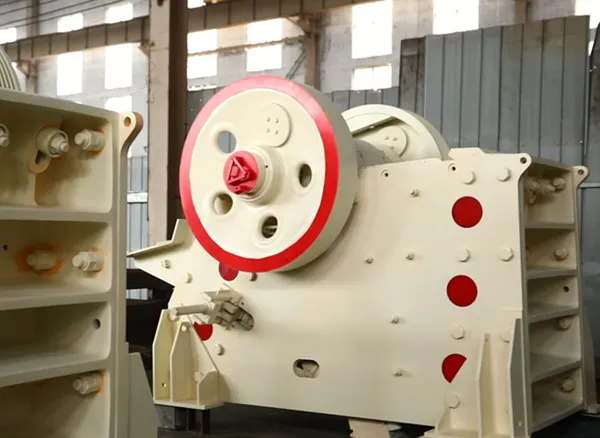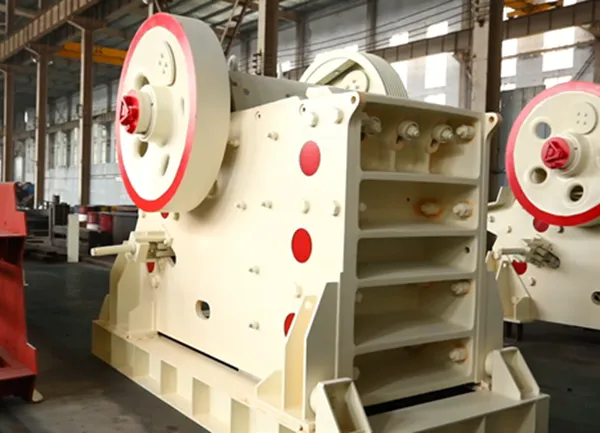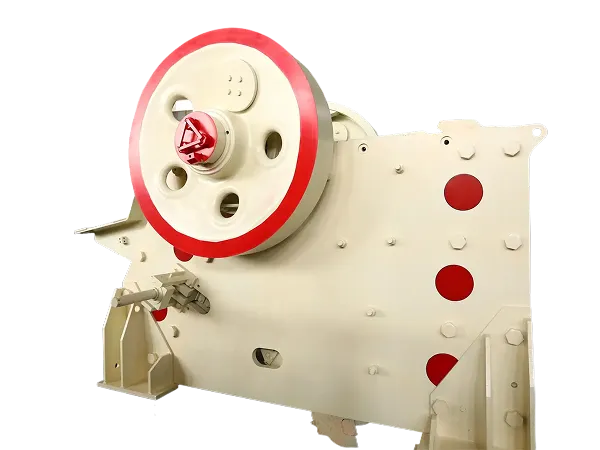Increasing the capacity of a jaw crusher involves understanding the factors that affect its performance and implementing strategies to optimize them. Here's a comprehensive analysis of expert optimization strategies to boost your jaw crusher's output.

Before implementing optimization strategies, it's crucial to understand the factors that directly influence a jaw crusher's capacity:
Feed Material:
Size: Larger feed size within the crusher's gape requires more crushing effort per piece, potentially limiting capacity.
Hardness and Abrasiveness: Harder and more abrasive materials wear down the crusher liners faster, requiring more frequent downtime for maintenance and potentially slowing the crusher down.
Moisture Content: Excessive moisture can cause clogging, bridging, and reduced material flow.
Gradation: A well-graded feed with a variety of sizes generally flows better and allows for more efficient crushing.
Crusher Settings:
Closed Side Setting (CSS): A wider CSS increases capacity but produces a coarser product. A narrower CSS decreases capacity but produces a finer product. Finding the optimal CSS is crucial.
Eccentric Throw (Stroke): A larger throw provides more crushing power and can increase capacity, but can also lead to increased wear and energy consumption.
Crusher Speed (RPM): Increasing the crusher speed can boost capacity to a certain point, but excessive speed can lead to material bouncing, reduced crushing efficiency, and increased wear.
Crusher Design & Condition:
Gape (Feed Opening): The larger the gape, the larger the feed size it can accept, potentially increasing capacity.
Liner Design & Condition: Worn liners reduce crushing efficiency and capacity. The liner profile affects material flow and crushing action.
Toggle Plate Condition: A worn or damaged toggle plate can affect the crusher's stroke and efficiency.
Flywheel Weight & Speed: Flywheels store energy and provide consistent crushing power. Proper flywheel weight and speed are important.
Material Handling:
Feed Rate: Consistent and controlled feed is essential. Surges and starvation can reduce overall capacity.
Discharge Chute: A properly designed discharge chute ensures efficient removal of crushed material. Bottlenecks in the discharge system can limit capacity.
Maintenance:
Regular Inspections: Identifying and addressing potential problems early prevents breakdowns and ensures optimal performance.
Proper Lubrication: Ensures smooth operation and reduces wear on moving parts.
Liner Replacements: Replacing worn liners restores crushing efficiency and maintains capacity.

Here are detailed strategies for boosting your jaw crusher's capacity, grouped by the factors they address:
A. Optimizing Feed Material:
Feed Size Optimization:
Screening: Implement pre-screening to remove fines and oversized material before they enter the crusher. This allows the crusher to focus on material within its optimal size range.
Primary Crushing Before Jaw Crusher: Consider using a scalping screen followed by a primary impactor to reject fines and presize the feed for the jaw, as well as reducing the wear in the jaw.
Reduce Maximum Feed Size: Ensure the largest pieces of feed material are well within the crusher's gape (feed opening) and recommended feed size. This prevents bridging and clogging.
Moisture Content Control:
Dust Suppression: Implement dust suppression systems (water sprays) to reduce dust and prevent it from clinging to the material, but avoid excessive moisture.
Drying: If moisture content is excessively high, consider using drying equipment before crushing. This is often necessary for clay-rich materials.
Feed Gradation Control:
Blending: If possible, blend different materials to create a more well-graded feed. This improves material flow and crushing efficiency.
Feed Control System: Use a control system (e.g., variable-speed feeder) to maintain a consistent and controlled feed rate, preventing surges and starvation.
B. Optimizing Crusher Settings:
Closed Side Setting (CSS) Optimization:
Trial and Error: Experiment with different CSS settings to find the optimal balance between capacity and product size. Start with a wider CSS and gradually decrease it until you reach the desired product size while maintaining acceptable capacity.
Analyze Product Gradation: Regularly analyze the gradation of the crushed product to ensure it meets specifications. Adjust the CSS accordingly.
Consider Material Properties: Harder materials generally require a wider CSS than softer materials.
Eccentric Throw (Stroke) Adjustment:
Consult Manufacturer's Recommendations: The eccentric throw is often fixed, but if adjustable, consult the manufacturer's recommendations for the specific material being crushed.
Balance Capacity and Wear: A larger throw can increase capacity but also increases wear. Strike a balance based on your operating costs and maintenance schedule.
Crusher Speed (RPM) Optimization:
Variable Frequency Drive (VFD): Consider using a VFD to fine-tune the crusher speed. Start with the manufacturer's recommended speed and make small adjustments to optimize performance.
Monitor Power Consumption: Monitor the crusher's power consumption as you adjust the speed. Excessive power consumption can indicate that the crusher is overloaded or running inefficiently.
Beware of Material Bounce: Watch the material within the crusher to avoid bouncing. Bouncing indicates that the crusher speed is too fast.
C. Optimizing Crusher Design and Condition:
Liner Selection & Maintenance:
High-Quality Liners: Use high-quality liners made from abrasion-resistant materials (e.g., manganese steel, chrome carbide).
Proper Liner Profile: Choose a liner profile that is appropriate for the material being crushed. Some liners are designed for better gripping, while others are designed for better material flow.
Regular Liner Inspection: Inspect liners regularly for wear and replace them when necessary. Don't wait until they are completely worn out, as this reduces crushing efficiency and can damage the crusher.
Liner Thickness: Use thicker liners than standard, if possible, as these offer longer life between replacements.
Toggle Plate Maintenance:
Regular Inspection: Inspect the toggle plate for wear and damage.
Proper Lubrication: Ensure proper lubrication of the toggle plate and its pivot points.
Replacement: Replace the toggle plate when it shows signs of wear or damage.
Flywheel Maintenance:
Proper Weight: Ensure that flywheels are correct weight for the operation.
Regular Balancing: Regularly balance the flywheels to prevent vibration and excessive wear.
Bearing Maintenance: Properly maintain flywheel bearings.
Consider Crusher Upgrades:
Hydraulic Adjustment Systems: Upgrade to a hydraulic CSS adjustment system for faster and more precise setting adjustments.
Automatic Lubrication Systems: Install an automatic lubrication system to ensure consistent lubrication of all moving parts.
Modern Crusher Design: If the existing crusher is very old, consider replacing it with a newer model that incorporates modern design features for improved capacity and efficiency.
D. Optimizing Material Handling:
Consistent Feed Rate:
Variable Speed Feeder: Use a variable speed feeder (e.g., apron feeder, belt feeder, vibrating feeder) to maintain a consistent and controlled feed rate.
Level Sensors: Install level sensors in the feed hopper to regulate the feeder speed and prevent overfilling or starvation.
Efficient Discharge:
Proper Chute Design: Ensure that the discharge chute is properly designed to prevent bottlenecks and ensure efficient removal of crushed material.
Adequate Conveyor Capacity: Make sure the conveyor system downstream of the crusher has sufficient capacity to handle the crusher's output.
E. Optimizing Maintenance Practices:
Preventive Maintenance Program:
Regular Inspections: Implement a regular inspection schedule to identify potential problems early.
Lubrication Schedule: Establish a lubrication schedule and use the correct type of lubricant for each component.
Vibration Analysis: Use vibration analysis to detect early signs of bearing wear and other mechanical problems.
Predictive Maintenance:
Oil Analysis: Implement an oil analysis program to monitor the condition of the lubricant and identify potential problems within the crusher.
Thermography: Use thermography to detect hotspots that can indicate bearing failure or other electrical problems.
Well-Trained Personnel:
Operator Training: Ensure that the crusher operators are properly trained in the operation and maintenance of the crusher.
Maintenance Technician Training: Provide maintenance technicians with the necessary training to perform routine maintenance and repairs.

Prioritize Changes: Implement changes one at a time, starting with the most impactful and easiest to implement.
Track Performance: Monitor the crusher's capacity, power consumption, and product gradation before and after each change.
Data Analysis: Analyze the data to determine the effectiveness of each change and make further adjustments as needed.
Continuous Improvement: Treat optimization as an ongoing process. Continuously monitor performance and look for new ways to improve capacity and efficiency.
Lockout/Tagout Procedures: Always follow proper lockout/tagout procedures before performing any maintenance or adjustments on the crusher.
Personal Protective Equipment (PPE): Wear appropriate PPE (e.g., hard hat, safety glasses, hearing protection, steel-toe boots) when working around the crusher.
Confined Space Entry: Follow proper confined space entry procedures when entering the crusher for maintenance or inspection.
By carefully analyzing your jaw crusher operation and implementing these optimization strategies, you can significantly increase its capacity, reduce downtime, and improve overall efficiency. Remember to prioritize safety and consult with the crusher manufacturer or a qualified crushing expert for specific recommendations tailored to your application.
Address: Luoyang Luoxin Industrial Park, Henan,China
E-mail: sales@yd-crusher.com
Phone: 86-139-3993-0123

Yude
Mechanical
Create the greatest value for customers
Provide the best quality products and services
86-139-3993-0123
sales@yd-crusher.com
Luoyang Luoxin Industrial Park, Henan,China